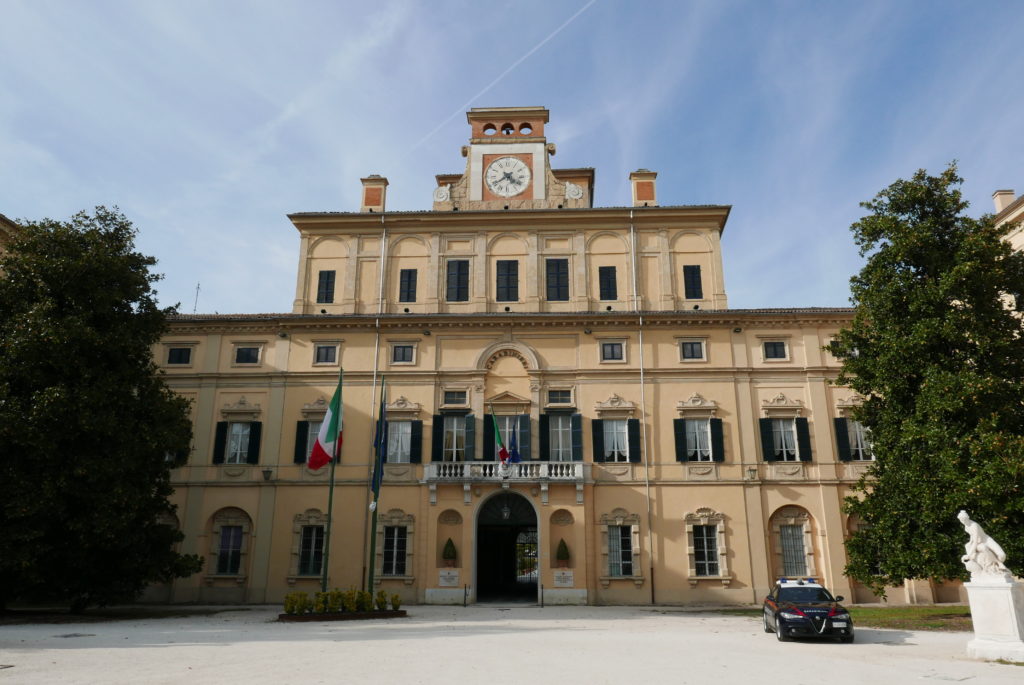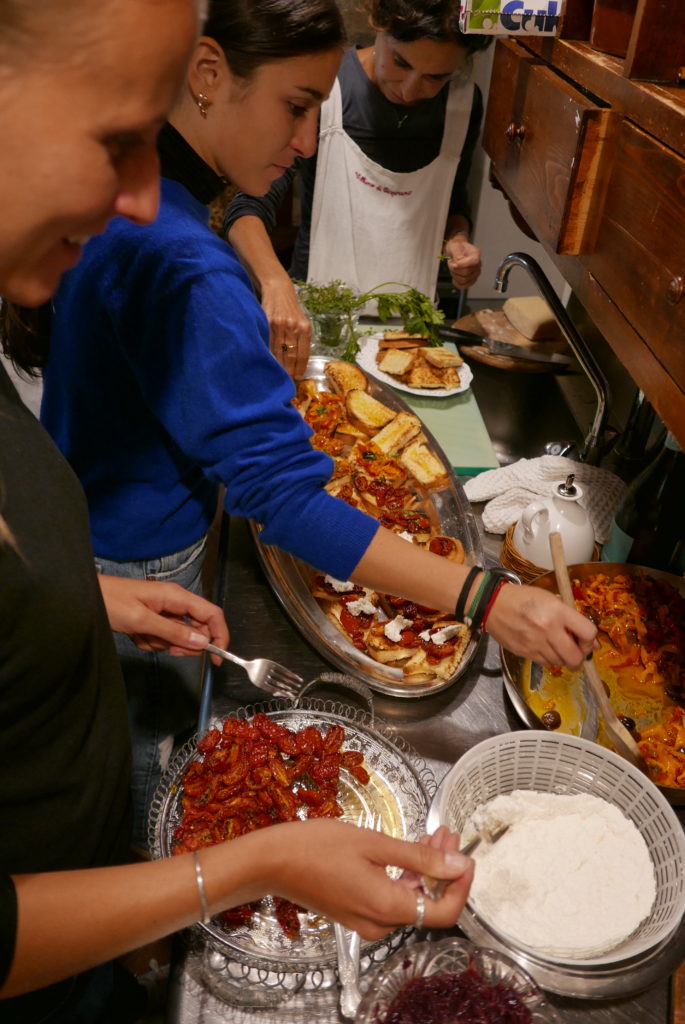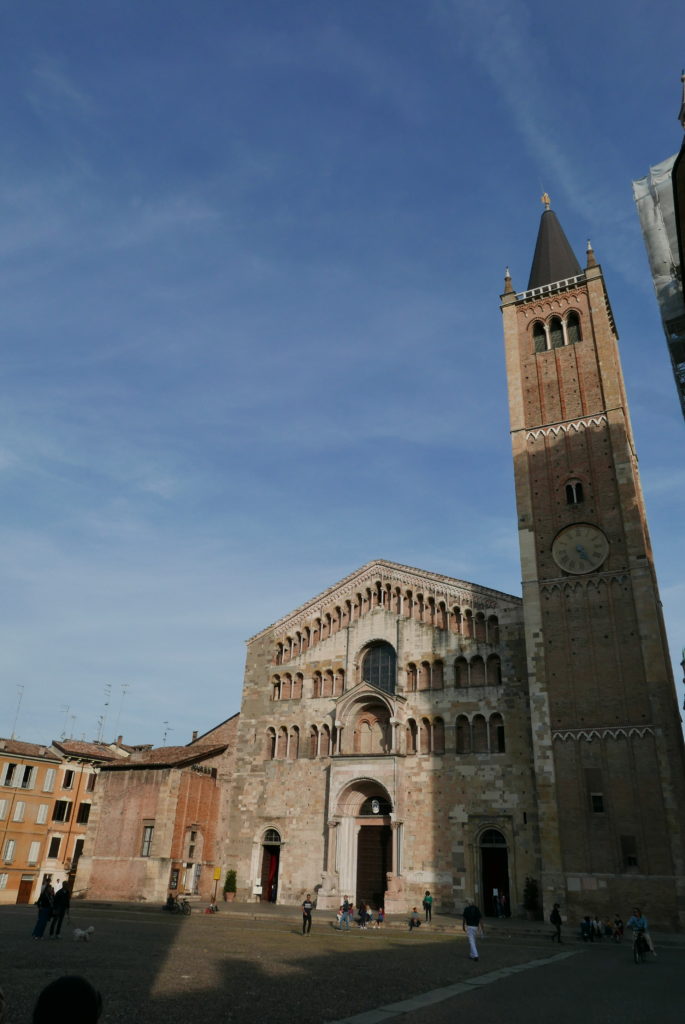 Parma's Ducal Palace
Parma's Ducal PalaceThe northern Italian city of Parma offers cuisine, culture and opera. James Ruddy reports.
You might expect to hear torrents of abuse from the football crowds at Arsenal’s Emirates or Dublin’s Landsdowne Road stadiums, but I hardly expected such angry outbursts when I donned my newly-pressed Armani suit for a glitzy night at one of Italy’s finest opera houses.
It happened at Parma’s stunning Teatro Regio when a woman in the gallery, high above and behind me, began screaming in animated Italian at the conductor: “Abbado, go back to Bologna!”
Others, in the loggione - the €15 ‘cheap seats’ - joined in with similar screams, sprinkled with a lively array of boos and whistles, all aimed at Roberto Abbado in the orchestra pit, as he tried to direct the music for Verdi’s three-and-a-half hour masterpiece, La Forza Del Destino.
The cause of their anger was a claim – strongly denied – that the Teatro Comunale in the nearby ‘Big Brother’ regional capital city, Bologna, was trying to merge with the Parma theatre and even take over its renowned Verdi festival.
The unfortunate Abbado was called ‘the Bolognese coloniser’ by the rowdy objectors due to his chorus and orchestra on the festival’s opening night coming from Bologna and ousting the local Teatro Regio performers.
Opera, Italian-style, can leave you breathless with the sheer excitement and spectacle. And Parma, with some of the most knowledgeable and vocal supporters in the world, is known for being unforgiving and demanding of off-tune singers and outlandish directors and conductors.
On one infamous occasion, in 1816, the tenor Alberico Curioni was even whistled and booed to such an extent that he decided to hurl obscenities back at the audience until police were called and arrested him on stage.
In the two centuries since then, the demanding audience has shown its appreciation of the finest but also hurled regular screams of derision to the extent that the curtain has had to be brought down sometimes and, on one occasion, the theatre’s administration was dismissed.
So it was no surprise when I was back in the thick of it, on my third and final Verdi night, when the loggiostini were screaming again- this time aiming the abuse at director Valentina Carrasco for setting Act 2 of a stunning version of Simon Boccanegra in a Genoan slaughterhouse, complete with blood-covered fake meat joints hanging from ceiling hooks.
“Verdi was not a butcher,” was one of the less abusive shouts that rained down during the performance and they flared up again as the highly talented director bowed for her very uncomfortable final curtain call.
It was another edgy and fascinating experience for myself and my weekend companions, a dozen or so American lawyers and businesspeople on a visit organised by the International Friends of Verdi, a non-profit organisation, based in the United States, which supports the acclaimed annual festival.
But they weren’t there solely to enjoy the magical musical legacy of Parma’s most famous son, they also wanted to savour the northern Italian city’s history and food treasures as well.
What transpired was a deep dive into the daily pleasures of of a place with a turbulent and colourful past that has founded its economy on some of the best things in life – food, drink and music.
The fun began with cocktails at the 18th century Palazzo Marchi , dripping with history including the World War II period when it was badly damaged by Italian resistance fighters whilst being used as a command centre for fascist dictator Benito Mussolini’s local forces.
Later came a first taste of the best of the city’s world-famous parmesan cheese and prosciutto ham at a dinner in the theatre’s sensually decorated ballroom.
And, of course, there was complete immersion in the Parma ham story, with a private tour of one of the family-run Galloni plants, where techniques learned over centuries produce the joints that now hang everywhere, from London to New York.
But opera was at the heart of everything, with tours of the Teatro’s huge workshops.
Backstage, we were treated to a fascinating insight into the painstaking efforts put into such major props as those controversial fake meat joints or a huge artificial field of wheat containing hundreds of plants, made by local technicians, which popped up during the Simon Boccanegra performance.
But, above all, we experienced Parma’s unique pride and passion and pride in the local boy who became the 19th century’s global opera superstar – and can still get hearts and voices racing across the world.
 Verdi Festival poster
Verdi Festival posterThe Verdi Festival
The festival runs for almost a month annually starting in late September and showcases some of the vast catalogue of 26 operas produced by Verdi, who was born in 1813 in Busetto, just 20 miles away.
Hosted by Parma’s prestigious opera house, Teatro Regio, the event also includes a festival fringe, called Verdi Off, which takes the music, art, film, food and fun of the event into countless local squares and villages and, often, into people’s homes.
So, even visitors with little interest in Rigoletto or la traviata can find plenty of fizz and dazzle across the city and region to capture their interest.
You can put together your own trip or choose a tailor-made package. I joined the US-based International Friends of the Festival Verdi organisation, which offered a fabulous four-day experience that included three operas, as well as accommodation at a four star central hotel ( the Sina Maria Luigia) as well as a programme of exclusive private dinners and receptions as well as workshop and backstage tours at the opera house. On top of these were a pasta cookery course and a prosciutto factory tour.
The non-profit group of enthusiasts was founded five years ago by its president James Miller, who fell so much in love with Verdi and Italy that he set out to spread the word to his fellow Americans and as many people as possible. The Friends have developed strong bonds with the Teatro, which provides their visits with rare access to unique events during the festival. For more information go to: iffv.org – Teatro Regio Parma For visit inquiries, email the Friends at [email protected]. Plans for next year’s festival will be announced by the Teatro at: https://www.teatroregioparma.it/en/homepage/
 The pasta cookery class in action
The pasta cookery class in actionWhat to see and do
Parma is a 5000-year-old treasure house of historic buildings, art, music and exceptional food which is all available in and around the compact and easily walkable city centre.
With just 195,000 residents, it is conveniently sited between Milan and Bologna in Italy’s less-touristy north-east Emilia Romagna region, where the climate allows for year-round visiting and train and bus links are plentiful.
Daytime strolling can take you to the magnificent cathedral, the many fine frescoed churches, the palaces, parks, squares and fascinating food and history museums.
For plenty of insider information try https://www.visit-parma.com/en/
 Parma Cathedral
Parma CathedralGetting there:
The easiest way to reach Parma from the UK is with a low-cost flight to Milan or Bologna ( I flew with easyJet from Gatwick to Milan Malpensa) and then take the efficient train service (you can buy cheaper advance express tickets online at www.trenitalia.com/en.html).
If you need a cut-price deal on an airport hotel, parking, lounges or transfers, try Holiday Extras. At London Gatwick, for example, one night’s accommodation at the Crowne Plaza with four days’ parking at Purple Parking is from £120. Go to HolidayExtras.com or call 0800 316 5678.

